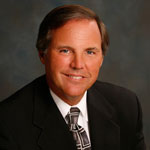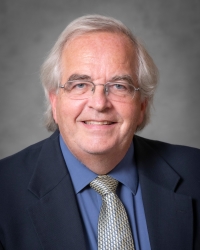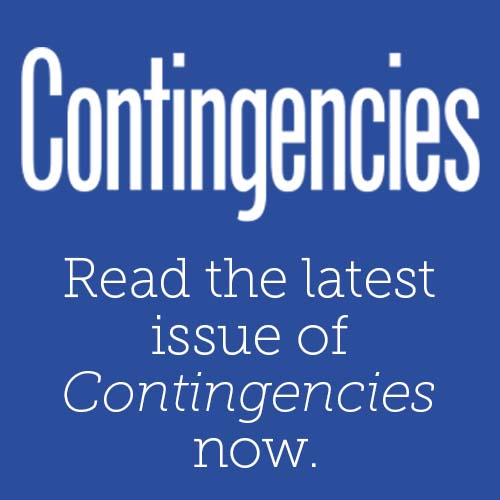Introduction
 2010 has been a year of great progress for the American Academy of Actuaries and we will begin 2011 with brighter prospects. As the Academy's 2010 president, I take absolutely no credit for this—the credit is due to the Academy's leaders, volunteers, and staff members. I want to thank each of you—it is your hard work, dedication, commitment, and professionalism that has made 2010 so successful.
2010 has been a year of great progress for the American Academy of Actuaries and we will begin 2011 with brighter prospects. As the Academy's 2010 president, I take absolutely no credit for this—the credit is due to the Academy's leaders, volunteers, and staff members. I want to thank each of you—it is your hard work, dedication, commitment, and professionalism that has made 2010 so successful.
A year ago, we identified the need for undertaking a top-to-bottom examination of the Academy's governance and its role in helping the Academy fulfill its mission to the public and the profession through its work at home and abroad. I'm pleased to report that our Governance Task Force has delivered a comprehensive report, with specific recommendations, to the Academy board of directors. The report is posted on the Academy website?along with an online comment form. I encourage you to read the report and share your comments with us as the board begins considering these recommendations.
One of my commitments when I began my term as Academy president was to improve communications with our membership and the public. In working toward that goal, we've used a number of means during this past year to keep you informed about what is going on at the Academy—from our mainstay publications, Contingencies and the Actuarial Update, to new, timely e-mails from the president, videos, and Twitter. We have taken a huge step in communications this year, but there is still much more to be done.
A record number of Academy members responded to our annual volunteer survey; Academy members clearly are more aware of what we're doing and voting with their keyboards in support of growing actuarial influence in the public policy arena.
We indeed have aggressively targeted public policy work during the past year as hundreds of volunteers have focused on a variety of issues with a level of intensity that I have not previously seen from the Academy. Within every practice area, at the state, federal, and international levels, we are addressing vital issues that significantly affect the public, and that will, we believe, change the way actuaries practice in areas that are coming under ever-increasing regulatory scrutiny. Let me highlight just a few items for you:
- The Health Practice Council launched an all-out effort throughout 2009 and early 2010 to address the various health care reform proposals. When the final legislation was passed, the council immediately engaged in the regulatory-implementation phase. It's important to note that members of Congress frequently called the Academy in 2009 and 2010 to get unbiased information on various reform proposals; while their final votes may have been driven as much by politics as facts, they knew who to call for objective and reliable information. This relationship has only grown stronger with our key stakeholders in the administration as new rules are being drafted at a breakneck pace.
- Our Pension and Life Practice councils have been collaborating to assist regulators with their efforts to encourage access to and use of lifetime income options for retirees.
- The National Association of Insurance Commissioners' (NAIC) regard for the Academy's work was evident when it asked the Academy to broadly assess the current risk-based capital system, analyze what works and what doesn't, and recommend solutions?for all lines of insurance.
- The Casualty Practice Council continues to address practice and regulatory concerns through both the Committee on Property and Liability Financial Reporting (COPLFR), and the Risk-Based Capital Committee. The council also has raised its profile with Congress on a variety of hot button issues ranging from oil spill liability to averting repeal of the antitrust exemption for medical professional liability insurers.
- The Risk Management and Financial Reporting Council has been working at the international level to address insurance reforms and accounting standards that will affect U.S. practices and regulations. At the state level, the council has worked to coordinate the development of policy statements across practice areas on issues such as deferred tax assets. At the federal level, it has tackled federal oversight of insurance and systemic risk policy stemming from the Wall Street reform law. This includes meeting with the Treasury's assistant secretary for financial institutions in October to discuss these issues.
- One natural outgrowth of the Academy's public policy work has been the actual advocacy of positions. What makes us unique and credible in this area is that our advocacy is restricted to positions that are in the public interest. Two years ago we didn't see significant support for our advocacy position for raising the Social Security retirement age as part of a demographic solution for the sustainability of Social Security. But we persevered in our ongoing communications efforts regarding this position, with the result that policymakers from different parts of the political spectrum, as well as the mainstream media, have recognized and now often cite our position. This is a sign that the issue has ripened and that actuaries are seen as leaders in the discussion.
These are just a sampling of the 2010 accomplishments of Academy volunteers. You'll read about much more of their work in the pages that follow.
In an age of declining mainstream media where opportunities to earn media coverage are shrinking, Academy spokespeople continue to be featured in prestigious print, broadcast, and online media. As subject matter experts, they have provided the actuarial perspective on serious issues—from retirement and lifetime income to health reform implementation, from catastrophic risk to systemic risk, and countless others in between and beyond.
Engaging 17,000 members from different practice areas and with diverse experience can be seen as a challenge?or as an opportunity to be innovative. This year we launched the Academy Advisors, an online survey research panel with an initial enrollment of more than 300 Academy members willing to volunteer their time and provide valuable feedback. We have also created the Young Actuaries Committee to ensure that the next generation of actuaries is part of the dialogue as we determine how to move the profession forward.
The collaboration between the five U.S.-based actuarial organizations continues to be a priority. While the Academy is a member organization, we are something of a hybrid, because the leaders of the other four U.S.-based organizations sit on our board of directors. The leaders of the five organizations then form a committee of the board known as the Council of U.S. Presidents (CUSP). Among other initiatives this group has worked to develop a proposal for an improved disciplinary process that will greatly benefit the U.S. profession. CUSP also has coordinated positions on international issues between the U.S. and North American organizations. We may not always agree, but we communicate well and collaborate wherever we can.
It has been a genuine honor to serve as the 2010 Academy president. I must thank the members of our Executive Committee and board of directors. These are smart, successful people who give up a great deal to serve the Academy and the profession. They truly deserve our respect and thanks. And I also am honored to thank our more than 1,000 volunteers. I simply am overwhelmed by the number of brilliant people who volunteer their time to make our profession stronger. Without you the Academy could not function. I have full confidence that you will support 2011 President Mary Frances Miller as strongly as you have supported me?and that the Academy will reach new heights in 2011.
Thank you all!
With deep appreciation,

Ken Hohman
2010 President
American Academy of Actuaries







